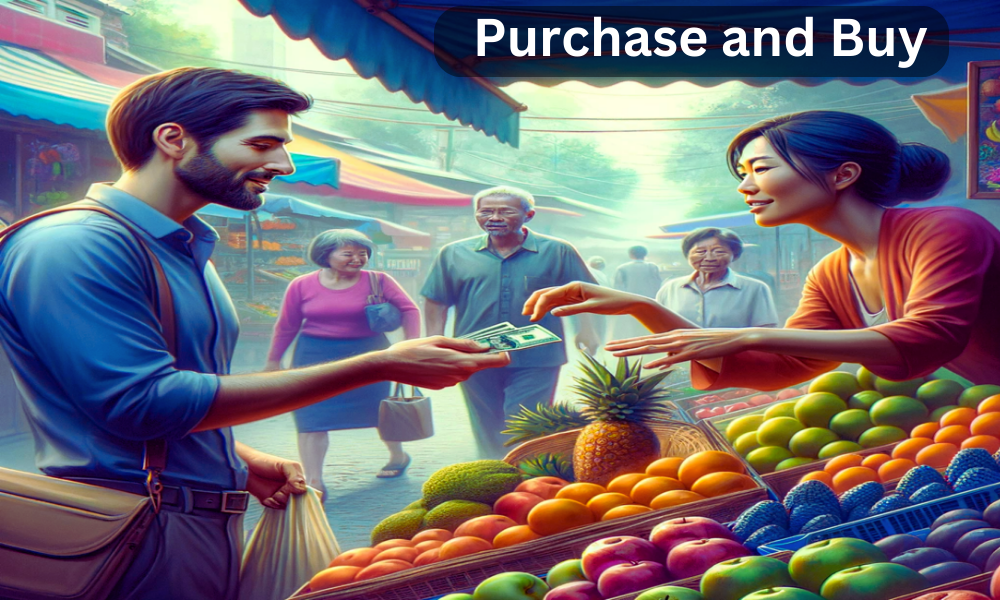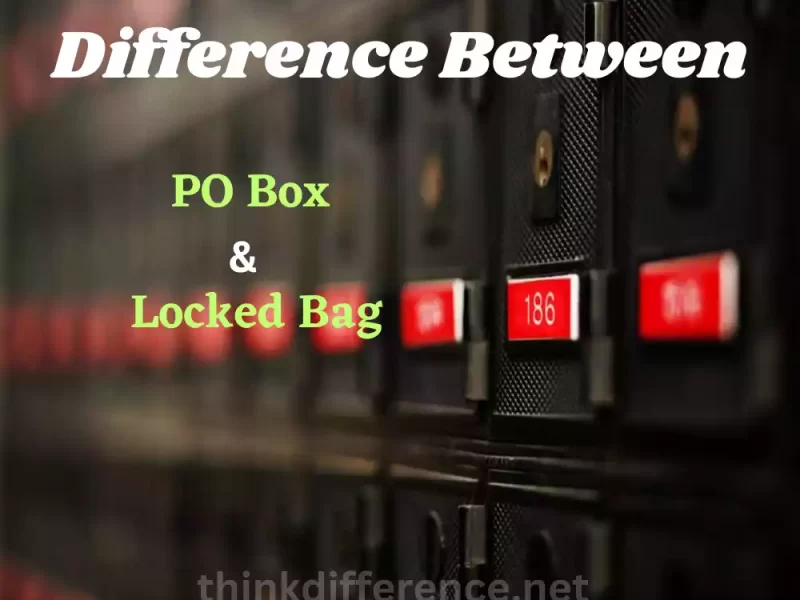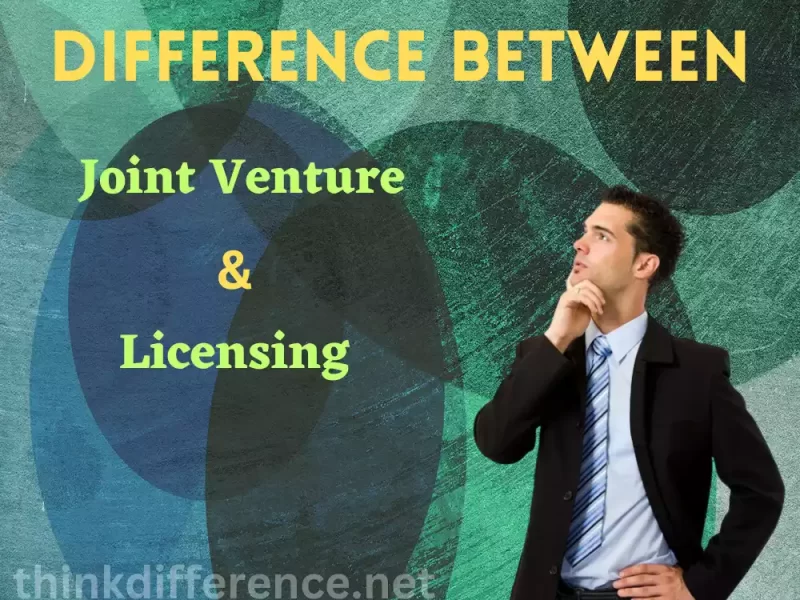Purchase and Buy, though commonly used interchangeably, possess distinct meanings within the world of commerce. The term “purchase” refers to the exchange of money or payment in exchange for a service or product that results in the transfer of legal ownership to the purchaser.
This usually involves warranties as well as legal implications and consumer protections. The purchase can be a one-time regular or even an online transaction providing ownership benefits. In contrast, buying is a broader term that covers a variety of acquisitions, including ownership being only one of them.
It may include impulse buys as well as planned purchases and wholesale transactions. While purchasing can be flexible, it requires careful thought to avoid spending too much and causing disappointment. Understanding these distinctions is crucial to making educated decisions regarding both personal and business transactions
Definition of Purchase
The purchase is a fundamental economic function that involves the exchange of money or a certain type of payment to pay for the purchase of an item, service, or other asset. It refers to a transaction in which the buyer, whether individual, company, or company, receives the right to use or own the product or service from a vendor.
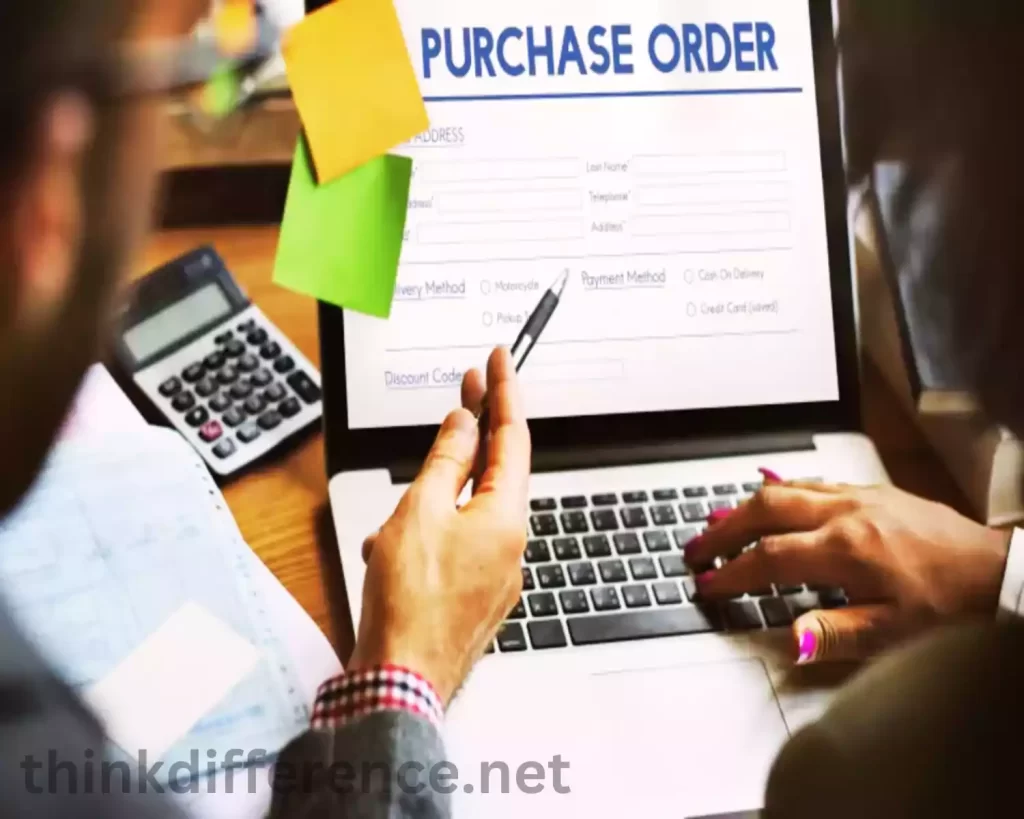
The purchase can span a broad variety of things, from essentials like food and clothes to substantial investments like cars and real estate. The buying process usually involves the buyer declaring their intention to purchase an item or service and then the payment of the buyer with compensation according to agreed-upon terms which typically include the price or the payment structure.
The payment method used can vary from cash to digital currencies, credit cards, or barter systems, depending on what the purchase is as well as the current economic climate. Purchases may be one-time events or a part of ongoing transactions, such as regular shopping or monthly subscriptions. They may have legal implications, like guarantees, policies on return as well as consumer rights, based on the location and type of purchase.
In essence, they constitute the core of economic activity, helping the exchange of products and services, fueling economic growth, and shaping the market’s changes. Understanding the complexities of purchasing is essential for consumers as well as policymakers in navigating the maze of commerce.
Definition of Buy
The term “buying” refers to the process of trading your money or a valuable item for something you’d like. It’s like going into an establishment and offering the cashier money for a toy, tasty snack, or clothes. The buying process can also occur by exchanging items, for example, swapping an old gaming console for the bicycle of a friend.
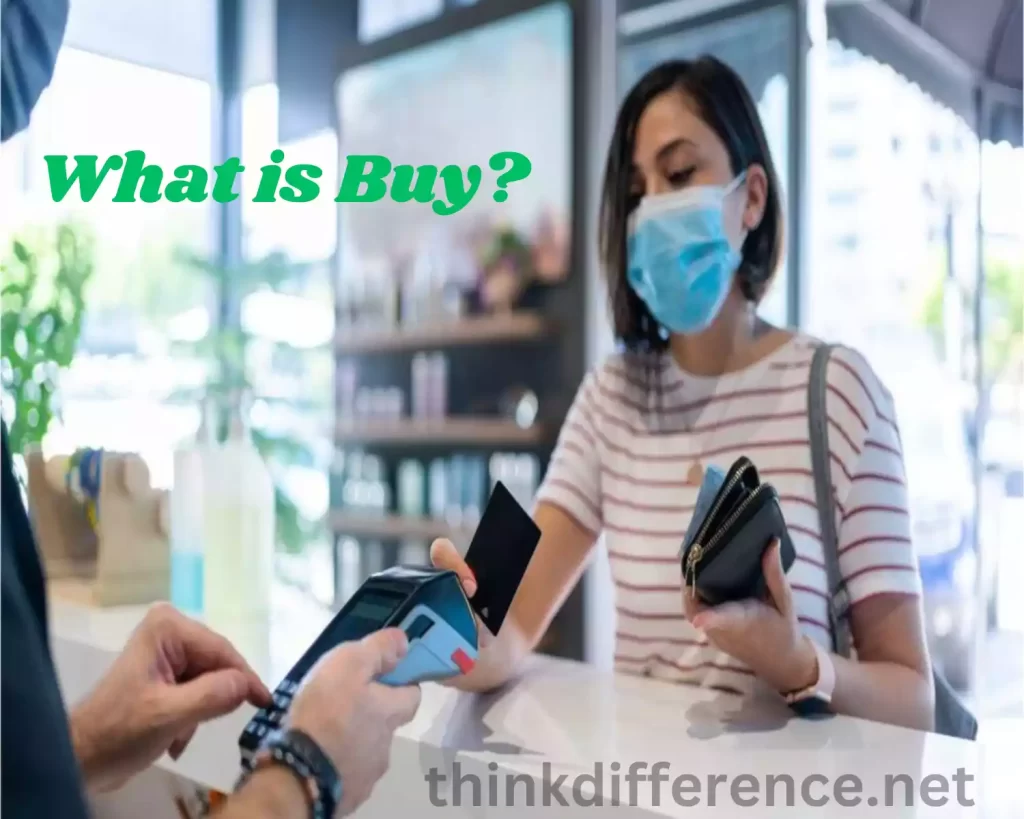
If you purchase something, you can make use of it or keep it, based on what both you and your seller negotiated. For example, if purchase a brand-new book, you can read it at any time you want. If you purchase a delicious pizza, you can take it home and relish the delicious taste.
They buy things they require such as food items or school supplies, as well as items they want, such as gadgets or toys. Shopping is the way we acquire the things we want and want to make our lives easier as well as more fun. It’s an integral aspect of acquiring the items we utilize every day.
Key Difference Between Purchase and Buy
Here’s a simplified comparison chart highlighting the key distinctions between purchase and buy:
| Aspect | Purchase | Buy |
|---|---|---|
| Ownership Transfer | Ownership is transferred to the buyer. | Ownership may or may not transfer, depending on the transaction. |
| Formality | Typically involves formal transactions with legal documentation. | Can be formal or informal, from planned to impulsive decisions. |
| Types | One-time purchases, recurring purchases, online purchases, etc. | Impulse buying, planned buying, wholesale buying, etc. |
| Duration of Ownership | Generally results in long-term ownership or use. | Ownership may be temporary or usage-based. |
| Benefits | Offers ownership, consumer protection rights, and potential long-term use. | Provides flexibility, quick access, and potential cost savings in some cases. |
| Challenges | May require substantial upfront payment, careful consideration, and legal obligations. | Risk of overspending, potential for impulse purchases, and limited ownership in some cases. |
| Examples | Buying a house, purchasing a car, online shopping. | Impulse buying at a mall, subscribing to a streaming service, borrowing a tool. |
| Legal Implications | Often comes with warranties, return policies, and consumer protection laws. | Legal implications vary depending on the transaction type and location. |
| Financial Considerations | Typically involves larger financial commitments and planning. | Can be more budget-friendly, depending on the item or service. |
| Emotional Factors | Often involves a more considered and deliberate decision-making process. | Can be influenced by emotions, immediate gratification, and impulsive choices. |
| Environmental Impact | May promote long-term sustainability if durable goods are purchased. | Sustainability may vary based on the nature of the buy (e.g., sharing economy). |
Examples Highlighting the Difference
Purchasing a House vs. Buying Groceries:
- House purchases represent one of the major financial transactions a person will undertake and typically involve paying out an enormous sum of money upfront.
- Buying groceries, on the other hand, is a routine activity that involves acquiring everyday items from a store, typically without any formal contractual agreement. The focus is on the act of acquiring necessary goods for immediate consumption.
Buying a Ticket to a Concert vs. Purchasing a Digital Song:
- Buying a ticket to a concert involves acquiring a specific entry pass to attend a live event. It usually requires a monetary transaction and may involve selecting seat options and paying a ticket price.
- Purchasing a digital song refers to acquiring a digital copy of a song or album, often through an online platform. It involves a purchase transaction where the buyer pays for the rights to download or stream the music, usually without any physical component.
Purchasing a Subscription Service vs. Buying a Physical Book:
- Purchasing a subscription service, such as a streaming platform or software subscription, involves paying a recurring fee or subscription cost to access a specific service or content over a defined period.
- Buying a physical book entails acquiring a tangible item, usually through a purchase transaction, where the buyer obtains a physical copy of a book that they can own, read, and keep indefinitely.
- These examples illustrate the key distinctions between buy and purchase when considering its nature, type of goods acquired, and context of sale acquisition. Purchases often involve larger financial transactions and formal agreements, while buying can refer to various methods of acquiring goods or services, including both formal and informal transactions.
Factors Influencing the Choice Between Purchase and Buy
- Ownership vs. Usage Requirement: If you’d like to own an item for yourself it is more likely that you buy it. If you require something for a brief or specific purpose, buying it is a good option.
- Budget and Cost: The price of a product or service may be an important aspect. The purchase of a product may require an initial payment, whereas buying can be less expensive, particularly for transactions that are not owned by the buyer.
- Product or Service Type: The kind of item you’re purchasing is crucial. For example, buying groceries is a common thing to do, but buying a home is an ongoing commitment.
- Frequency of Use: How often you will utilize something can influence your decision. The items you use frequently can be purchased, whereas less frequent usage items may be purchased or borrowed.
- Financial Situation: Your financial stability as well as your resources can play an important role. Purchases may require extensive financial planning, whereas purchasing a product could be a more spontaneous choice.
- Emotional Factors: The emotions you feel can affect your decision. An emotional desire or desire to own a home could result in a purchase and practicality could be the reason behind buying.
- Convenience and Accessibility: The ease of buying the product or service is important. Purchases may require more effort, like research and documentation, but purchasing can be simple and easy.
- Environmental Considerations: The environmental impact and the need to reduce pollution could affect your decision. Sharing or buying used items may be in line with sustainable values.
- Social and Cultural Factors: The influence of societal norms and culture can influence your choices. For instance, certain culture’s values are ownership, whereas others encourage sharing of resources.
- Legal and Regulatory Factors: Legal requirements and regulations could determine whether you must buy something or if a purchase is enough. This is particularly relevant when it comes to real property.
Real-world Examples and Case Studies
Real-world Examples:
- Buying Groceries: If you walk into an upscale supermarket and load your cart with food, you’re participating in purchasing. The groceries are paid for however you don’t have them the as you would have an automobile. It’s a purchase that is recurring that you use or use the products for some time.
- Purchasing a Car: The purchase of a car is typically an investment. You must pay for the entire cost or get financing as a result you become the proprietor of your car. The purchase comes with obligations such as the registration process and insurance.
- Online Shopping: Shopping in online stores is a scenario of both purchase as well as purchase. You buy items through payment, however, you can be able to “buy now” or add to your cart for the next purchases.
Case Studies:
- Real Estate Purchase: Imagine you’re looking to buy the house of your dreams. You do your research and find a suitable property and then negotiate to the owner. After you have concluded the transaction with the agreed-upon price you’ve completed a significant purchase. The property is legally yours.
- Impulse Buying at a Mall: You’re at the mall and spot a chic jacket that is on sale. In a moment of deliberation, you decide to purchase the item because it’s a fantastic bargain. This is a classic example of impulse purchasing that involves more the instant satisfaction of purchasing an investment plan.
- Subscription Services: A subscription to streaming services like Netflix or a month-long magazine subscription is a matter of purchasing access or usage rights instead of purchasing physical items. It is possible to pay a monthly cost for access.
- Used Car Purchase: You’re looking to buy a car, however, you choose to buy an older model instead of a brand-new car. You agree on a price, then buy it and you take over the ownership. The above is an instance of buying that is the purchase of a second-hand item.
- Borrowing in contrast to. buying tools: You may require a certain device for your DIY project. There is the option to purchase the tool or take it out of the hands of a neighbor. The borrowing process is not a purchase and buying will mean purchasing the tool for a long time.
Long-term vs. Short-term Considerations
In deciding between buying or purchasing, one should be aware of the length of their commitment, taking into account the long-term and short-term consequences. Purchases usually require a long-term commitment.
When you purchase that you’re investing in ownership or a long-term use of a service. Like, for instance, purchasing cars or houses requires significant financial commitments and is often used for long-term goals.
It requires thorough planning, and thorough analysis, and is accompanied by legal obligations such as mortgages and insurance. These are usually designed for years, if not years of usage. In contrast, purchases tend to be a focus on short-term concerns.
It doesn’t matter if it’s an impulse purchase like a cup of coffee or an anticipated purchase of groceries, purchasing is a way to satisfy your immediate desires or needs. It’s flexible and adaptable and can be adapted to changing conditions. The financial commitments are generally less, and the length of ownership or use may be rather short.
Achieving a balance between short-term and longer-term aspects is vital in making financial decisions. It involves weighing the advantages of ownership and the long-term value with the benefits of convenience cost-efficiency and instant gratification that purchasing a product or service provides.
Understanding your financial objectives and the nature of the product or service you’re buying is crucial to making informed decisions about whether to purchase or buy.
Summary
Purchase and purchase both require the purchase of goods or services, however, they are distinct from each other. The term “purchase” is used to describe the process of acquiring something in exchange for payment and resulting in the transfer of ownership, usually with legal consequences.
Purchase is a broad term covering a range of different ways of acquisition, including non-ownership transactions. It could be a single purchase or it could involve several transactions, from impulse purchases and planned buys.
Knowing these distinctions helps people make better decisions when buying products or services, taking into account the factors of the ownership of the item, its nature, and its purpose. Both of these processes are essential to the economy and play a crucial role in our lives every day whether it’s purchasing groceries or making large investment decisions.

